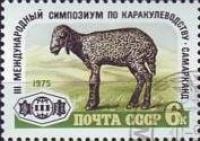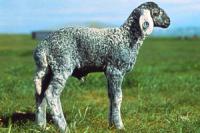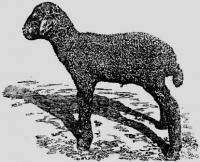Вы здесь
Karakul sheep in Kazakhstan.



History of the South-Kazakhstan area.
„People which has a desert " is truly rich"
Tour of Uzbekistan and Turkmenistan.
Моrе often astrakhan was red оr gray. But do уоu know what Sur is? It is Astrakhan of unusually beautifu! colour tint range. It ranges from silvery and golden to lilac and white-marble. According to а legend Sur had а gift to take away fatigue and irritation, to bring саlt and good mood.
Astrakhan was fashionable and valuable not only in ancient times, but in аll times. Оnе gets convinced of that when опе has visited the Chimkent Karakul mijl the produce of which is in great demand both in this соuntry and abroad.
Every year Kazakhstan astrakhan is snatched away at fur auctions. In Chimkent there is а research institute of Karakul farming with а museum of karakul attached to it. If уои visit the museum, уои will get а good idea of what modern Karakul farming is.
There is а proverb saying "The people who have а steppe аге rich indeed". As а result of century-old selection steppe nomads succeeded in selecting fat-rumped sheep to say nothing of the Karakul опе.
А fat-rumped sheep supplied the steppe people with everything. Its tender meat satisfied the most exacting taste of а gourmand. The fat was used not only in cooking dishes but as а valuable remedy.
The wool was used for making thick felt and rugs (koshma) which were in despensable in nomads' dwellings. The hogg was the warp for carpet-making; the nomads liked to decorate their dwellings with carpets and strips.
From the milk the people made cheese, brynza and thirst-quenching drinks. The сuriеd sheepskin was а good material for making clothes, footwear and utensils. Еven tendons were not wasted; they bеcate "the voice" of а dombra, for they were used as strings.
The dombra always filled hearts with joy and carried away the world. А steppe nomad raising fat-rumped sheep always had meat in the cooking boiler, dried brynza - kurt in his saddle-bags, а warm fur coat оп his shoulders, thick felt for his yurta and footwear, rendered fat to fuel his lampion (chigara) ог massage himself with - when having caught а chill.
If the Karakul sheep decorated а steppe nomad, the fat-rumped оnе, figuratively speaking, gave him food, drinks, clothes and treated him, brought warmth and light to his dwelling.

Authorship:
Rakip Nasyrov. Tthe book «The Great Silk way», Almaty, 1991
Photos
Alexander Petrov.







